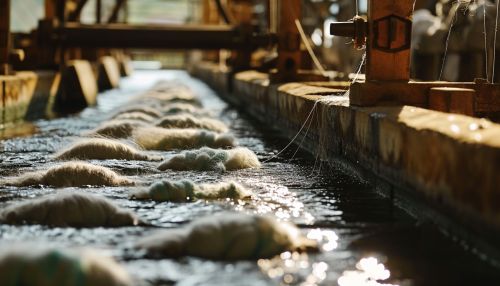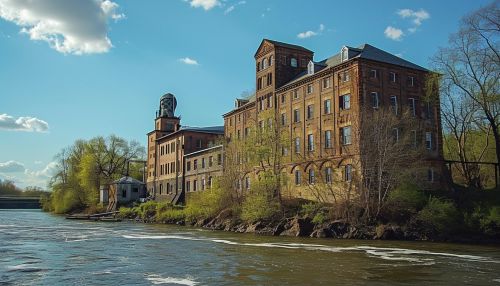Samuel Slater
Early Life and Education
Samuel Slater was born on June 9, 1768, in Belper, Derbyshire, England. His father, William Slater, was a prosperous yeoman and farmer, and his mother, Elizabeth Slater, was a homemaker. Samuel was the fifth of seven children in his family. He received a basic education at a local school where he learned reading, writing, and arithmetic.
At the age of 14, Slater was apprenticed to Jedediah Strutt, a partner of Richard Arkwright and the owner of one of the first cotton mills in Belper. Strutt employed the water frame, a machine that spun cotton into thread, which was invented by Arkwright. Slater's four-year apprenticeship under Strutt exposed him to the intricacies of the textile industry and the workings of the water frame.


Career in England
Upon completing his apprenticeship, Slater continued to work for Strutt. His diligence, intelligence, and understanding of the water frame led to his promotion to the position of supervisor. In this role, he was responsible for overseeing the operations of the mill and ensuring the efficiency of the machinery.
Despite his success in England, Slater was enticed by the opportunities available in America. The American textile industry was in its infancy, and there was a demand for individuals with knowledge of English textile machinery. Slater, with his extensive experience and understanding of the water frame, saw an opportunity to capitalize on this demand.
Migration to America
In 1789, Slater decided to emigrate to America. However, the British government, seeking to maintain its monopoly on the textile industry, had imposed strict laws prohibiting the export of textile machinery and the emigration of skilled mechanics. To circumvent these laws, Slater memorized the designs of the textile machinery and sailed to America under the guise of a farmhand.
Upon his arrival in America, Slater struggled to find investors willing to support his endeavors. However, his fortunes changed when he met Moses Brown, a prominent Quaker and industrialist in Providence, Rhode Island. Brown had recently acquired an old fulling mill in Pawtucket, Rhode Island, and was attempting to convert it into a cotton-spinning mill. However, his efforts had been unsuccessful due to the lack of skilled mechanics.
Slater convinced Brown of his ability to construct the machinery necessary for the mill. Impressed by Slater's knowledge and confidence, Brown agreed to partner with him. Together, they established the firm of Almy, Brown, and Slater.
Slater Mill
In 1793, Slater constructed the first successful water-powered cotton-spinning mill in America. The mill, known as the Slater Mill, was located in Pawtucket, Rhode Island. It employed the Arkwright system of cotton spinning, which Slater had learned during his apprenticeship under Strutt.
The Slater Mill was a significant development in the American textile industry. It marked the beginning of the Industrial Revolution in America and set the precedent for future cotton-spinning mills. The success of the Slater Mill led to the establishment of several other mills in Rhode Island, Massachusetts, Connecticut, and New Hampshire.


Later Life and Legacy
Slater continued to expand his business ventures throughout his life. He established several other mills and introduced new machinery and techniques to improve the efficiency and quality of cotton spinning. He also played a significant role in the development of the factory system in America, which emphasized the use of machinery and division of labor.
Slater died on April 21, 1835, in Webster, Massachusetts. His contributions to the American textile industry earned him the nickname "Father of the American Industrial Revolution". Today, the Slater Mill is a National Historic Landmark and serves as a museum dedicated to the history of textile manufacturing in America.
